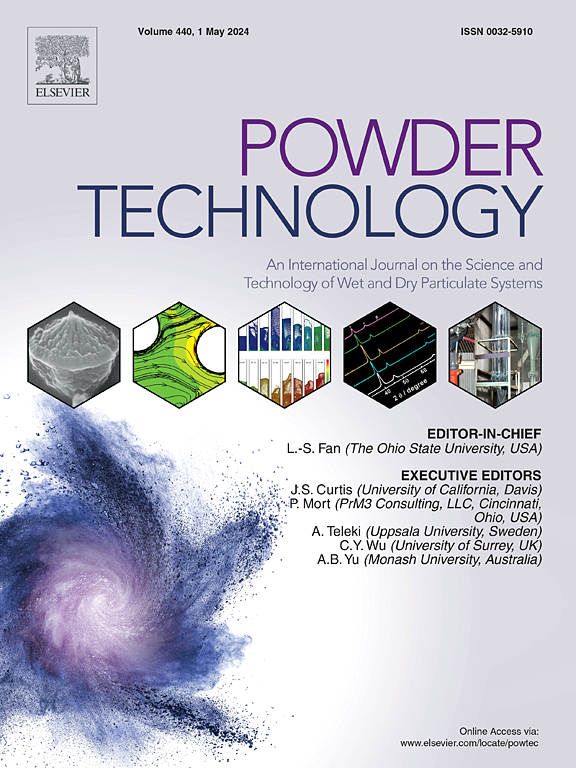通过喷雾干燥提高含有超细 Cr2O3 颗粒的铜基复合材料的机械和电气性能
IF 4.5
2区 工程技术
Q2 ENGINEERING, CHEMICAL
引用次数: 0
摘要
本研究利用喷雾干燥技术研究了不同的 Cr₂O₃ 含量对铜基复合材料机械和电气性能的影响。系统研究了不同浓度的 Cr2O3 对粉末形态的影响。利用冷压和烧结技术制造复合材料块,以检验不同 Cr2O3 含量下的微观结构、机械性能和导电性能。我们的研究结果表明,加入 Cr2O3 会降低导电率,同时显著提高硬度。值得注意的是,在 0.8 wt% 的最佳 Cr2O3 浓度下,屈服强度显著提高到 215 兆帕,极限拉伸强度提高到 255.96 兆帕,与使用纯铜粉末制备的复合材料相比,分别提高了 104.76% 和 114.91%。在机械坚固性和导电性之间取得的平衡表明,这些复合材料在电气应用中具有广阔的发展前景。本文章由计算机程序翻译,如有差异,请以英文原文为准。

Enhanced mechanical and electrical properties of Cu matrix composites with ultrafine Cr2O3 particles by spray drying
This study investigated the effects of different Cr₂O₃ contents on the mechanical and electrical properties of Cu-based composites using spray drying technology. The influence of varying Cr2O3 concentrations on the powder morphology was systematically investigated. Cold pressing and sintering were utilized to fabricate composite blocks to examine the microstructures, mechanical properties, and electrical conductivity with different Cr2O3 content. Our findings reveal that the inclusion of Cr2O3 led to a reduction in conductivity, while significantly improving the hardness. Notably, an optimal Cr2O3 concentration of 0.8 wt% gained a remarkable increase in yield strength to 215 MPa and ultimate tensile strength to 255.96 MPa, marking improvements of 104.76 % and 114.91 %, respectively, over composites prepared with pure Cu powders. The balance achieved between mechanical robustness and conductivity suggests a promising potential for these composites in electrical applications.
求助全文
通过发布文献求助,成功后即可免费获取论文全文。
去求助
来源期刊

Powder Technology
工程技术-工程:化工
CiteScore
9.90
自引率
15.40%
发文量
1047
审稿时长
46 days
期刊介绍:
Powder Technology is an International Journal on the Science and Technology of Wet and Dry Particulate Systems. Powder Technology publishes papers on all aspects of the formation of particles and their characterisation and on the study of systems containing particulate solids. No limitation is imposed on the size of the particles, which may range from nanometre scale, as in pigments or aerosols, to that of mined or quarried materials. The following list of topics is not intended to be comprehensive, but rather to indicate typical subjects which fall within the scope of the journal's interests:
Formation and synthesis of particles by precipitation and other methods.
Modification of particles by agglomeration, coating, comminution and attrition.
Characterisation of the size, shape, surface area, pore structure and strength of particles and agglomerates (including the origins and effects of inter particle forces).
Packing, failure, flow and permeability of assemblies of particles.
Particle-particle interactions and suspension rheology.
Handling and processing operations such as slurry flow, fluidization, pneumatic conveying.
Interactions between particles and their environment, including delivery of particulate products to the body.
Applications of particle technology in production of pharmaceuticals, chemicals, foods, pigments, structural, and functional materials and in environmental and energy related matters.
For materials-oriented contributions we are looking for articles revealing the effect of particle/powder characteristics (size, morphology and composition, in that order) on material performance or functionality and, ideally, comparison to any industrial standard.
 求助内容:
求助内容: 应助结果提醒方式:
应助结果提醒方式:


